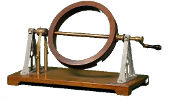» Wire Bolometer (0414)
Immagini
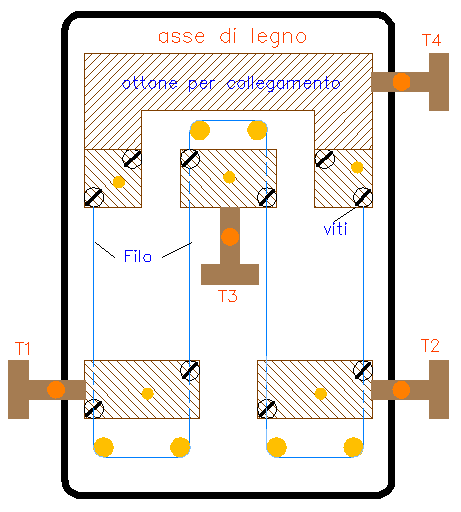
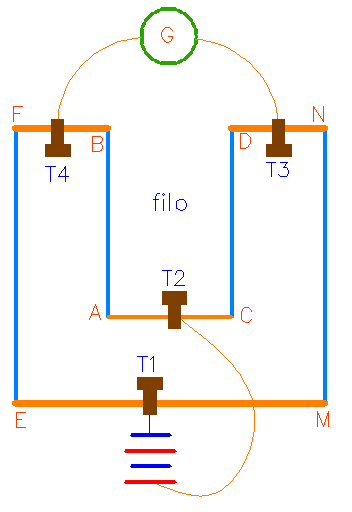
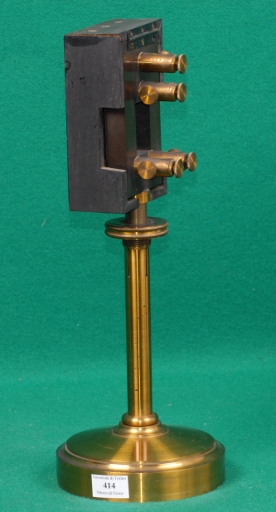
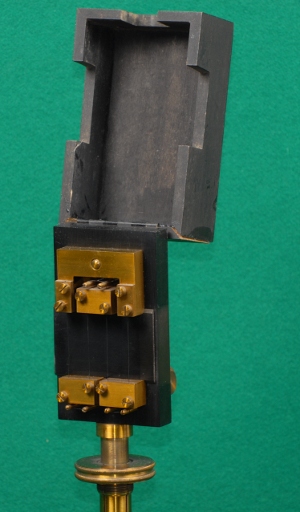
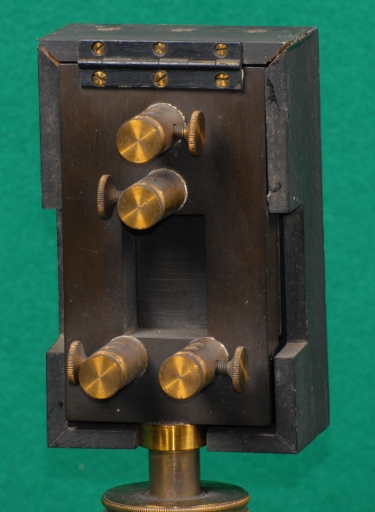
DESCRIPTION
Exhibit 414 is a bolometer, invented by Samuel P. Langley in 1878, a precise instrument that measures the radiant energy of electromagnetic radiation independent of the frequency. It contains a thin metal sheet covered with carbon black and inserted in an electric circuit. When the sheet is exposed to electromagnetic radiation, it acts as a black body: it absorbs all the incident energy and the consequent warming varies its resistance. By measuring this resistance (for example, with a wheatstone bridge) one determines the energy absorbed.
In this case, the sheet is substituted by a wire fixed to the walls of a completely darkened container.
The apparatus consists of a conducting wire arranged in a "W" shape, mounted on a wood base with a wood cover hinged to form a parallelelpiped supported on a brass column with a heavy circular base. Design 1 shows the path followed by the wire and the location of the external terminals T1, T2, T3, and T4 for connecting a galvanometer and a battery.
The parallelepiped is painted black both in the interior and the exterior where the four terminals are evident. The three holes present both on the top and on the bottom probably serve to dissipate the heat generated by the current in the wire.
Design 2 shows the apparatus inserted in a wheatstone bridge.
Dati Catalografici
| Data di costruzione: | --- |
|---|---|
| Data di carico: | ignoto |
| Nr. Inventario: | Ignoto (Ignoto) |
| Costruttore: | Costruttore sconosciuto |
| Materiale: | ottone, legno, ferro |
| Dimensioni: | Altezza: 29 cm; Diametro base: 11 cm |
| Conservazione: | buono |
